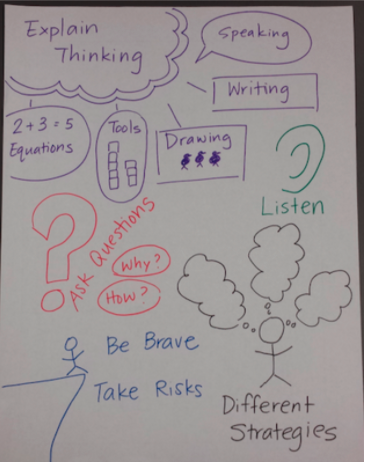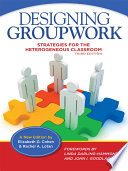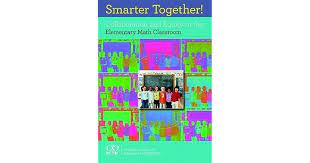
What is the Multiple Abilities Strategy?
Teachers use the Multiple Abilities Strategy to launch a lesson or task that involves collaborative group work. It is a way to communicate to students the variety of strengths and abilities, including skills, understandings, and mathematics practices, that are required to be successful in a given task.
Why would I use this strategy?
When used consistently, the Multiple Abilities Strategy can shift students’ beliefs about what counts as school mathematics and can support them to become more aware of how they and their peers can contribute to each other’s learning.
When a group works together on a rigorous or complex task, no one person has all the skills, understandings, or abilities to solve the problem on their own. Working together, a group is smarter than the sum of each of its members. This strategy helps students see what they and their peers bring to the task, and may point them to approaches they could take for solving it.
When do I use this strategy?
This strategy can be used whenever students are working in collaborative groups doing tasks that are complex and rich (so called groupworthy tasks.). It is especially useful when establishing and deepening classroom and group norms, and The Multiple Abilities Strategy supports students in feeling confident in their ability to do a task, so it supports access, and helps students see how they will need their peers to do a task, showing that all students are resources.
How do I use this strategy?
As you plan and do the math task, make a list of abilities (this should include strategies and mathematical strengths needed to be successful with the task) you will be looking for students to do as they work. Share this list with students, telling them that the task they will be working on can be solved from a variety of these (see the suggestions below to help you launch with students). Your list should include a variety of socio-mathematical norms, as well as content-specific strategies. Leave the list up to use as reminders for possible ways to approach the task, and for the teacher to reference when students are doing particular strategies.
Example of a Multiple Abilities List:
Say: These are some of the things that will help you with this task. Each of you can do some of these things; Probably, none of you can do all of these things equally as well. The members of your group can combine your strengths to be successful and learn together from this task.
- Listen to each other’s thinking.
- Ask questions.
- Draw rough sketches.
- Organizing information into a table
- Work with big numbers.
- Keeping track of multiple parts of a problem.
Say: None of us have all of these abilities but each of us have some. This is why you will need everyone in your group to be successful today. (Cohen and Lotan 1994, 2014; Featherstone, Crespo, Jilk, Oslund, Parks, Wood 2011)
When you are using the Multiple Abilities Strategy, you can use Participation Quizzes / Groupwork Feedback to give public feedback about what you see.
When you summarize the lesson, refer to the list and discuss the things you and students saw and how they helped their group. You can ask students to add strategies they used while doing the task that are not on the list.
More on Multiple Abilities Strategy
The research-based Multiple Abilities Strategy, originally developed by Julie Tammivaara, was further investigated in the context of Complex Instruction. The use of this strategy has been found to reduce the effect of status on participation (Cohen and Lotan, 1994 and 2014).
For more information, see these books:
- Cohen and Lotan 2014. Designing Groupwork: Strategies for the Heterogeneous Classroom, 3rd edition, pg 148-155
- Featherstone, Crespo, Jilk, Oslund, Parks, and Wood 2011. Smarter Together: Collaboration and Equity in the Elementary Math Classroom pg 69-80
 .
. 
Multiple Abilities Strategy in Practice
Fifth Grade Sample
This 10-minute video shows highlights of the Multiple Abilities Strategy being used in a 5th grade classroom.
This page was last updated on June 22, 2023

